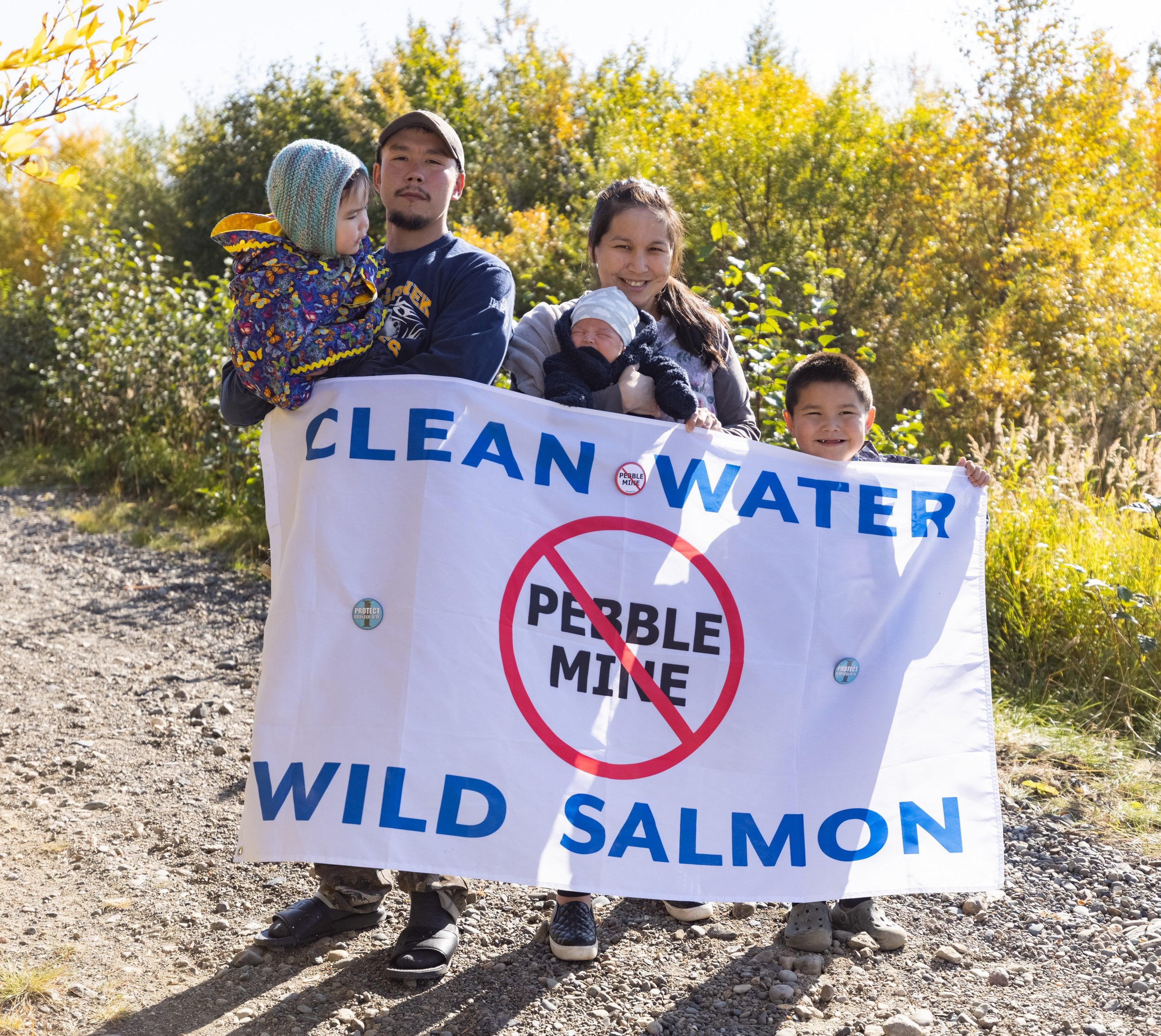
Native Movement Blog
When the fish go, a river runs quiet
The Tanana River is unusually quiet this summer due to low salmon returns for the third year in a row. Photo by Jeff Chen/Native Movement.
When the fish go, a river runs quiet
By: Jeff Chen
Elder Vernell Titus remembers the Nenana shores of the Tanana River as a lively place when summer would arrive each year – fish wheels churning, noisy birds all around, and boats zooming up and down.
“Usually there’s thousands and thousands of seagulls just making all kinds of noise – wanna get to that fish,” she says, gesturing to a modest fish rack drying nearby. “Right now with all that fish hanging there, you don't see not one seagull. It's strange – very very strange.”
Fish returns on the Tanana River have been abysmal since 2020 – both chum and king salmon numbers so low that Alaska Department of Fish & Game (ADF&G) closed the river to subsistence fishing for the third year in a row (2021-2022 summer chum salmon closure and 2020-2022 fall chum salmon closure). Meanwhile, commercial fishing in the South Alaska Peninsula remained open, harvesting a sizable portion of salmon bound for western and interior Alaska rivers.
A handful of community members nearby cut, dry, and smoke salmon. This year and last year’s salmon were donated from North Soul Salmon in Bristol Bay through a program called Fish for Families.
When the fish don’t come back, Titus says everything changes. On a recent trip to Lake Minto, she observed that only one lone swan drifted by, where normally a whole ecosystem thrives. As she teaches students how to sew birch bark, Titus repeats to them what her elders predicted, “The world is coming to a big change.”
Despite a quiet river, a group of roughly 50 people showed up each day for two weeks in July at a culture camp along the shore, put on by the Nenana Native Council. Most days, parents dropped off their kids to an intergenerational crew of elders, culture bearers, and advocates to share skills and knowledge of the Lower Tanana Dene – beading, crafting with birch bark, learning songs and dance, and studying plants.
The camp came alive in recent years as cultural advocates like tribal member Eva Burk and Nenana Native Council First Chief Caroline Ketzler sought funding and in-kind donations for the community to coalesce around culture.
On a sunny afternoon, Ketzler visits with camp organizers and helps with potlatch preparations. From cutting meat, preparing gifts, and serving elders, Ketzler expects a sense of community to emerge, something she says has wavered this last decade. “I'm really happy to see all of our hard work coming together and people getting that sense of community back, and just realizing that everybody is a person, an individual themselves. And even though we may not agree with each other, we can all come together and celebrate together.”
Families begin to arrive at the potlatch and get seated along the shore, just down the road from a former church mission, which eventually washed away with the river. “This land held significance before it was mission land. If you look at the pictures of our traditional chiefs in this area, you'll see them take photos right in front of that hill.”
At the same time that cultural revitalization is steadfast, subsistence opportunities have conversely dwindled. Hunters at camp who went to look for moose came back without any luck. Nenana residents talk about how their family’s traditional hunting areas aren’t the same as they used to be.
And now, the State’s nearby effort to sell 140,000 acres of land – the Nenana Totchaket Agricultural Project – threatens those traditional hunting grounds. The State has been looking to sell the land west of Nenana for decades, and this summer, the bidding began.
A range of views on the development exist, but Ketzler says industrialized agriculture activity will disturb the land, create runoff, and likely impact the adjacent land owned by the Toghotthele Corporation and also the waterways.
She believes the State has the development project already planned, and says the State sent consultation paperwork to Nenana Native Council during Christmas, when nobody was in the office.
Even as soil studies have yet to be completed, the State’s first auction for 27 parcels closed on October 4, 2022. “To buy that amount of land on that large of a scale, you have to have significant money,” Ketzler says.
A Nenana food sovereignty project called The Tlaa Deneldel Community Group was formed recently to make a bid on some of the land in order to build local tribal agricultural projects on.
Back at camp, 14 year old North Pole High School student Michael Burk and a friend help carry a couple boxes of frozen salmon to the cutting table. “It’s peaceful down here next to the river, and you get to talk to people,” Burk says. “We're just around the city most often. And once you come down here in Nenana, you honestly get to experience firsthand how to do things by hand.”
As the potlatch begins, elder Virgil Titus of Minto, stands up, beaming with pride. He’d just arrived from the Doyon 50th anniversary potlatch in Fairbanks. To the gathering, he speaks. “You’re holding your Alaska together. We love you for that, and we’ll never forget you. That’s all what we’re trying to pull our young people together for,” Titus says. “Believe me, this is the best camp I ever seen for a long time.”
The State of Alaska is currently auctioning off traditional subsistence lands for industrial agriculture. Donate today to support the Tlaa Deneldel Community Group, a Nenana food sovereignty project. www.NativeMovement.org/Landback.
This week, Native Movement and Always Indigenous Media brings you The Trickster Times . You can pick-up a print version at the Elders & Youth and Alaska Federation of Natives conventions. Some stories are more newsy, some are more commentary, and all are written from the heart and for our community. We welcome you to join us as we build people power, rooted in an Indigenized worldview, toward healthy, sustainable, & just communities for ALL.
Call on EPA to finalize Permanent Protections for Bristol Bay
The EPA has released their proposed determination for permanent protections in Bristol Bay which kicks off a 30-day public comment period. Please take a moment to submit your comment and share with your community!
"For too long, Pebble has been an ever-present threat in Bristol Bay. Future generations should not have to live with the threat of mining that would devastate our cultures, communities, and sustainable economy. Native Movement joins the United Tribes of Bristol Bay in asking the EPA to use its Clean Water Act authority this year to ensure that Bristol Bay's pristine lands and waters are protected forever.
The majority of Alaskans support EPA action to end the threat of Pebble and want to see Bristol Bay protected for good. It is time for the EPA to expedite the 404(c) process and finalize protections this year. The 404(c) protections should prevent Pebble, and other potential large mining operations like it, from storing or disposing of mining waste at the headwaters of our fishery. The EPA’s action must protect several critical sub watersheds: the North Fork Koktuli, South Fork Koktuli and Upper Talarik Creek, all of which support the productivity of Bristol Bay's wild salmon and are under threat from Pebble and large-scale mines like it.




